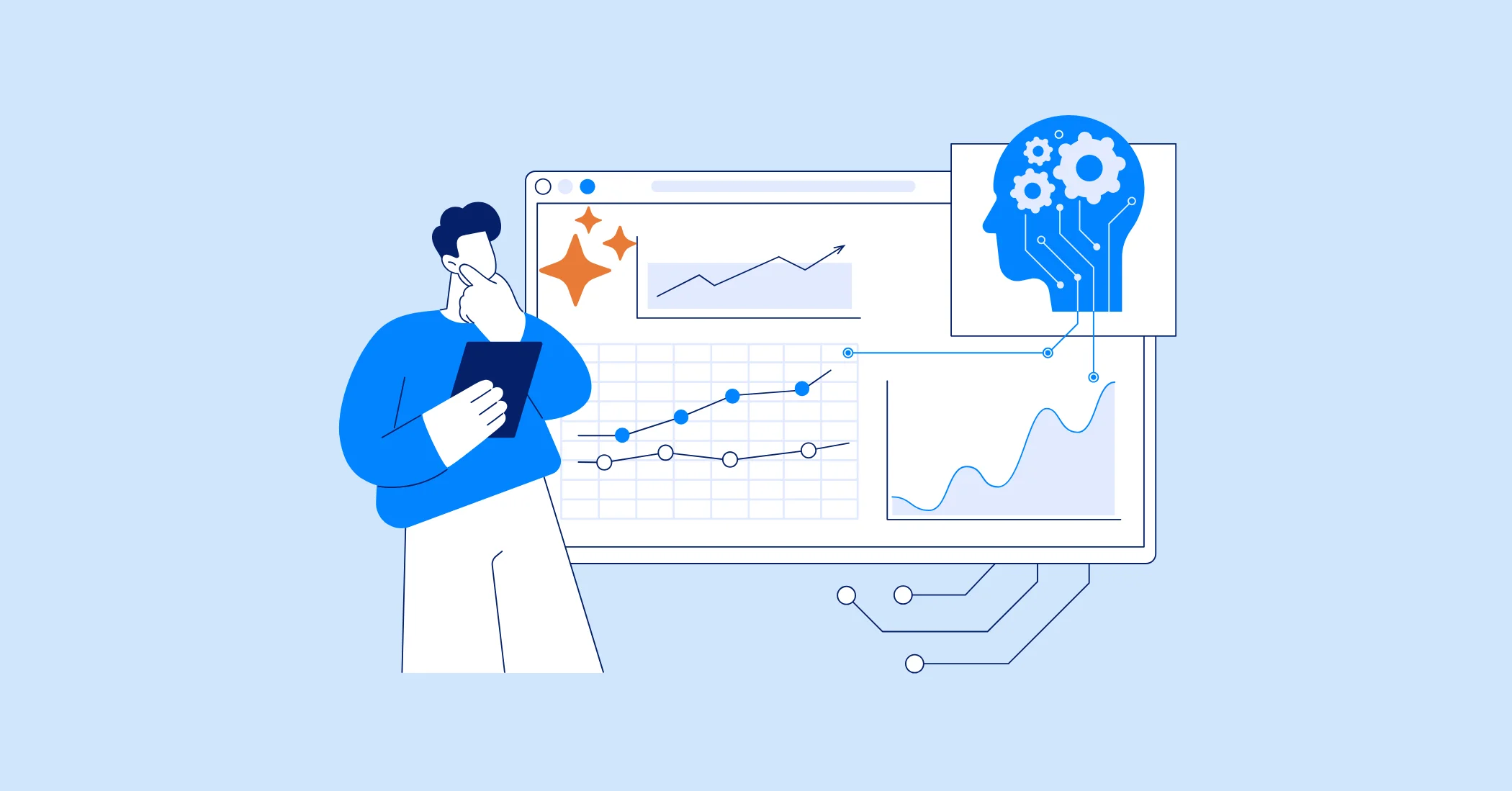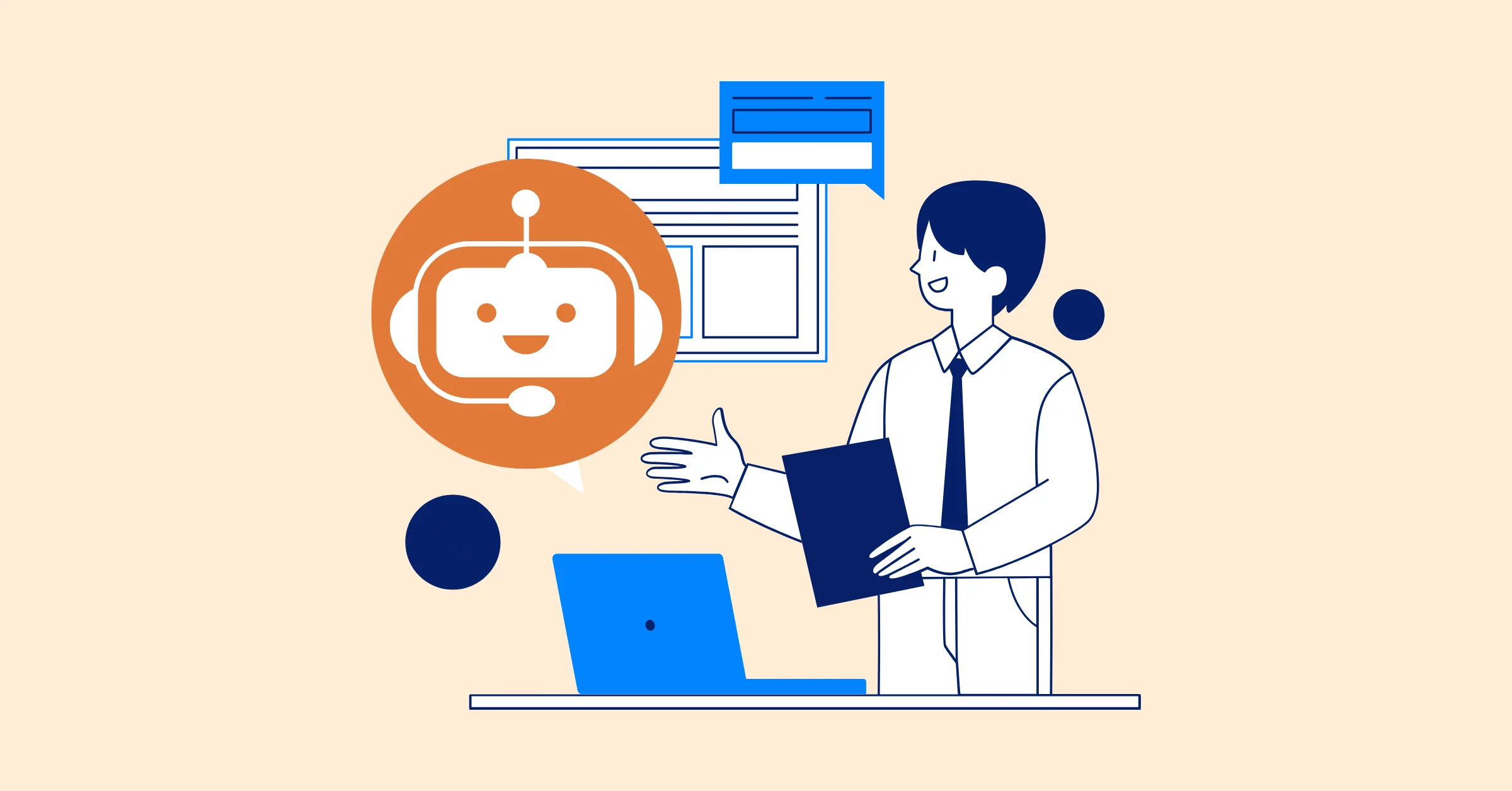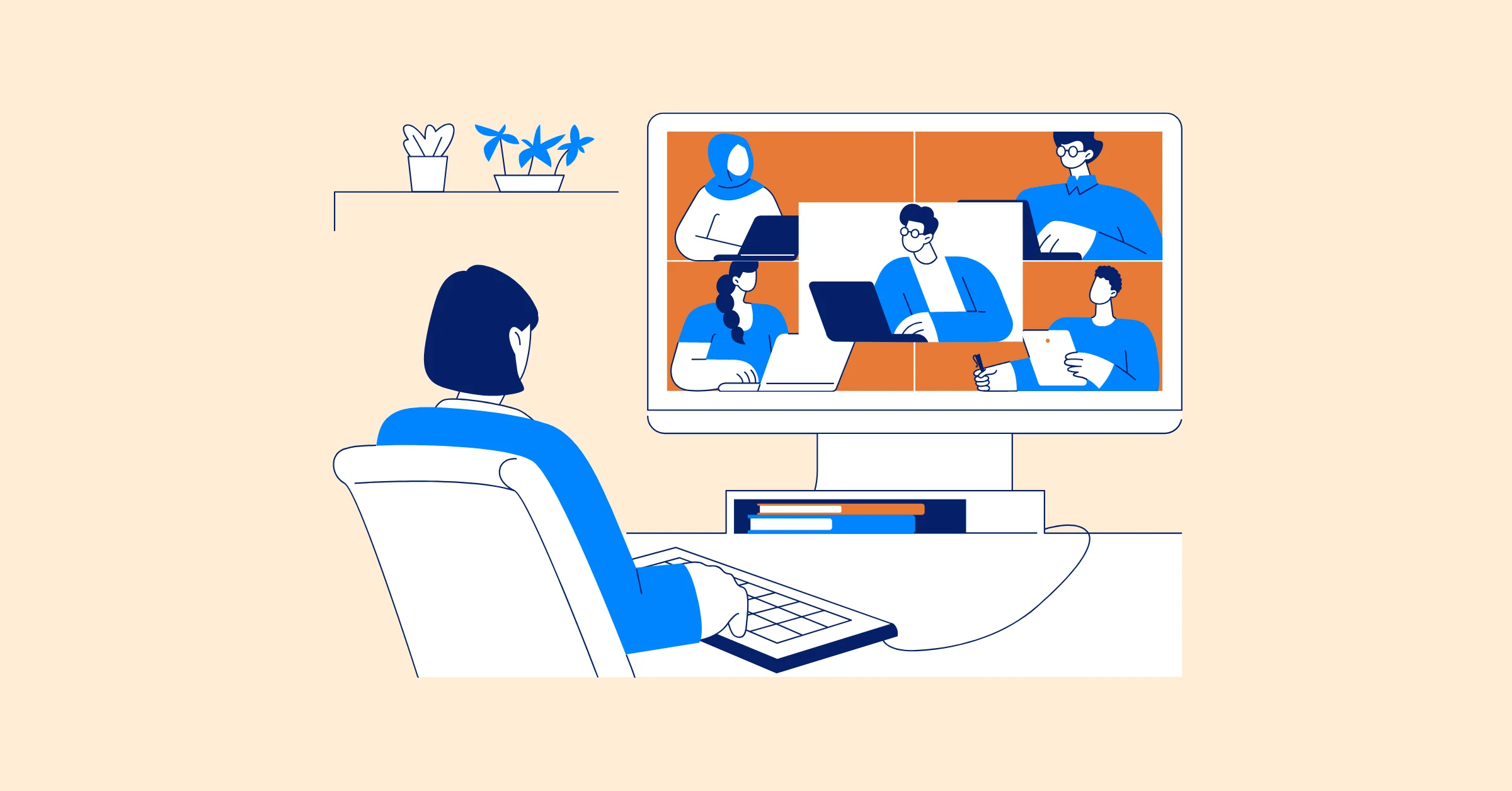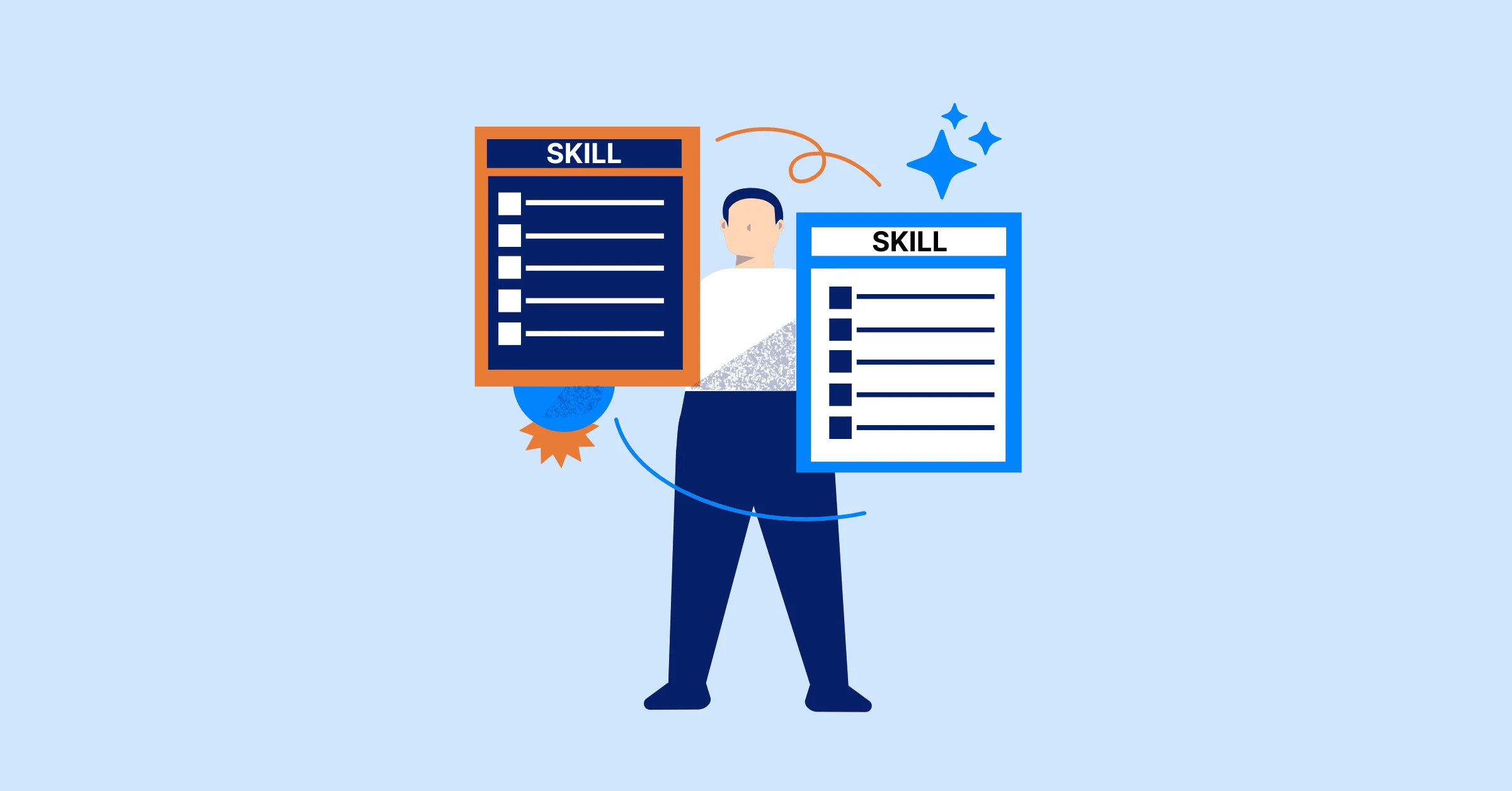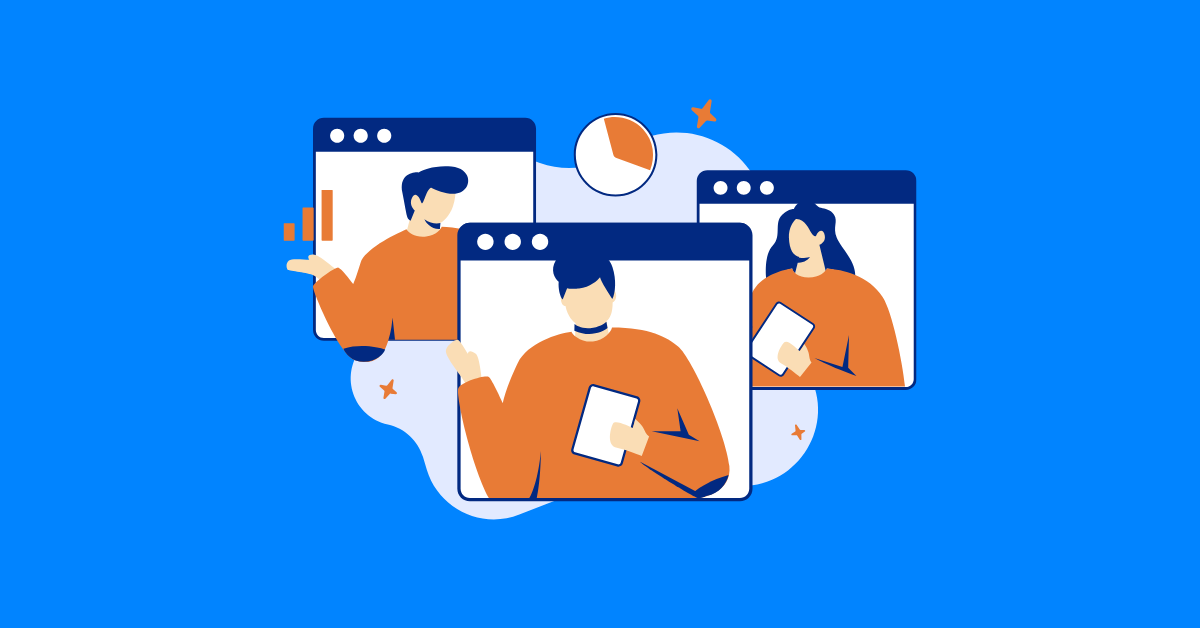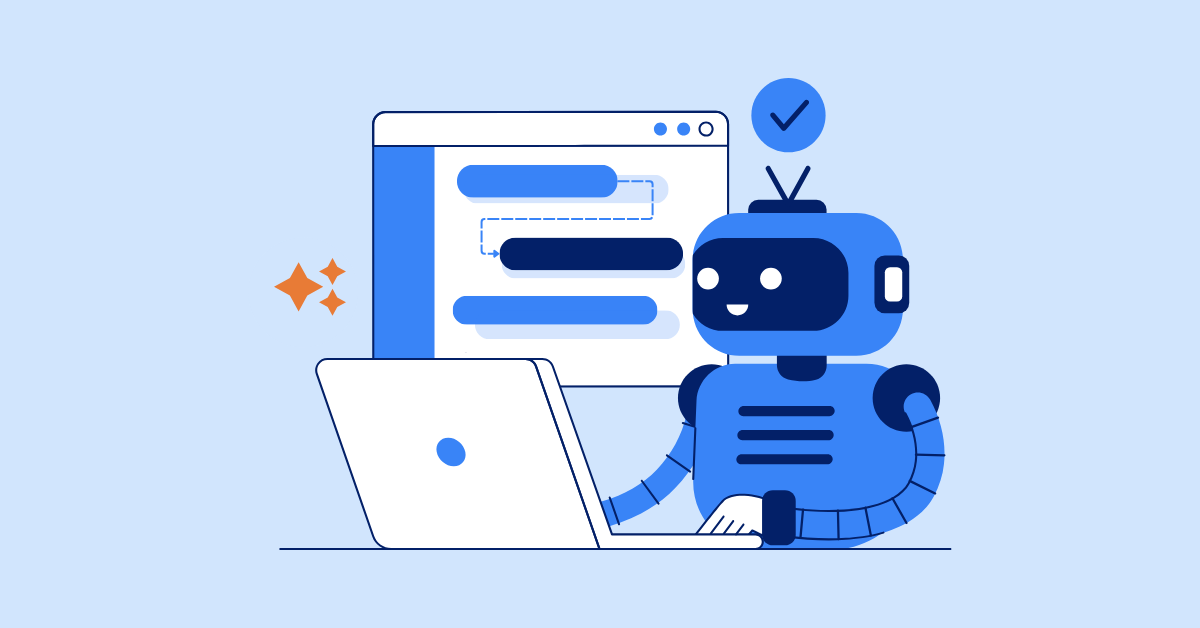How AI Can Help You Spot Project Risks Early - Predict Before You Panic
Discover how AI can help identify project risks early, from budget overruns to delays, and provide proactive solutions to keep your projects on track and stress-free.
In project management, risks are inevitable. Delays, budget issues, and resource shortages can all throw a project off course. Traditional methods of risk management often identify these issues too late, leaving little time to act.
But imagine if you could predict these problems before they even appear on the radar. That’s where AI steps in. With the power to analyze data in real-time, AI can spot hidden risks early, giving you the edge to address issues before they spiral out of control.
In this article, we’ll dive into how AI for project risks is changing the game in project risk management, helping you stay one step ahead and keep your projects on track — no panic required.
Understanding Project Risks
Every project, regardless of how well-planned, carries inherent risks. These uncertainties can lead to delays, cost overruns, or scope creep, impacting the project's success. Identifying and managing these risks early is crucial to keeping projects on track.
There are several types of risks that project managers must consider:
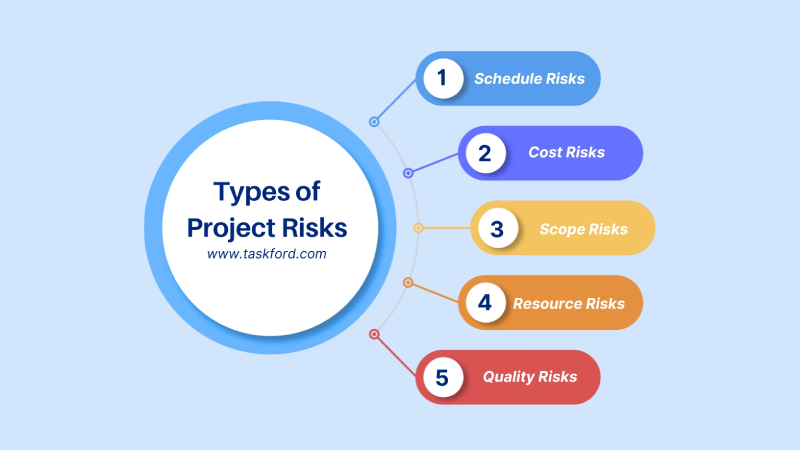
- Schedule Risks: Delays or missed deadlines.
- Cost Risks: Unforeseen expenses or budget overruns.
- Scope Risks: Unplanned changes or expansions in the project's scope (scope creep).
- Resource Risks: Issues with the availability of critical resources or personnel.
- Quality Risks: Compromises in the quality of deliverables.
Want to learn more about managing project boundaries and controlling changes? Read about what is scope in project management? And how to manage it effectively.
Why Risks Matter in Project Management
Risk is an inevitable part of project management. Whether it’s a missed deadline, unexpected costs, or resource shortages, managing these risks effectively can determine a project’s success or failure. Failing to identify and address risks early can result in delays, budget issues, and damaged stakeholder confidence.
Effective risk management allows project teams to:
- Anticipate challenges and prevent them from escalating.
- Make informed decisions based on data and risk assessments.
- Adapt quickly to unforeseen changes, ensuring the project remains on track.
Importance of Early Risk Identification
The earlier risks are identified in a project, the better equipped the team is to address them before they escalate. Early risk identification provides more time for proactive measures, adjustments to timelines or resources, and avoiding costly corrections later.
AI plays a crucial role in enhancing early risk detection. By analyzing real-time data, AI for project risks can spot early warning signs of potential issues, allowing project managers to take swift action and mitigate risks before they become serious problems.
The Role of AI in Project Risk Management
Artificial Intelligence (AI) is transforming the way project managers identify, assess, and manage risks. While traditional methods often rely on periodic reviews and manual assessments, AI offers a more proactive, data-driven approach that can identify risks early, enhance decision-making, and streamline project management.
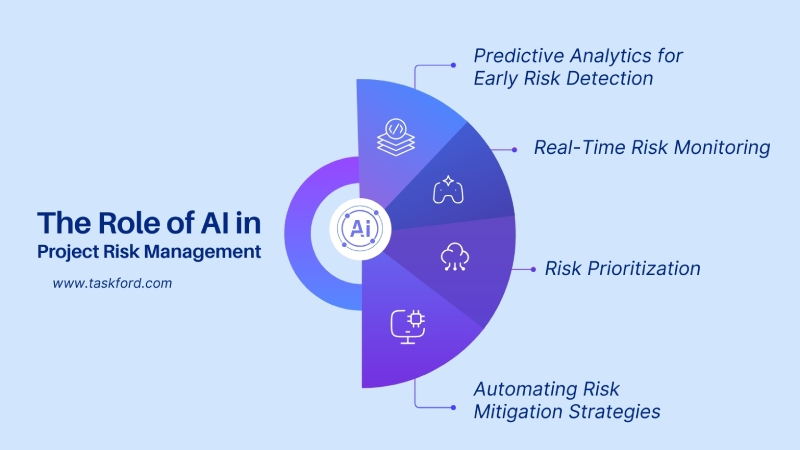
1. Predictive Analytics for Early Risk Detection
AI uses predictive analytics to anticipate potential risks before they happen. By analyzing historical and real-time project data, AI can identify patterns that may indicate upcoming issues.
For example, a PwC report found that 70% of high-performing projects use predictive analytics to better anticipate risks, helping project managers stay ahead of potential problems.
2. Real-Time Risk Monitoring
AI continuously analyzes project data in real-time, providing immediate alerts about emerging risks, such as budget changes or delays. This real-time monitoring enables project managers to act quickly, thereby avoiding costly setbacks.
A Deloitte study found that 82% of high-performing projects use real-time data to monitor and address risks faster.
3. Risk Prioritization
AI can assess the likelihood and impact of various risks, allowing project managers to prioritize their attention on the most critical issues. This ensures that teams address the most pressing risks first, rather than being overwhelmed by less significant concerns.
4. Automating Risk Mitigation Strategies
AI can also recommend and automate risk mitigation strategies. When a risk is detected, AI can suggest immediate actions like reallocating resources or adjusting timelines, allowing project managers to act swiftly and prevent bigger problems from developing.
How AI Spots Risks Early
AI’s ability to spot risks early in a project isn’t just about gathering data—it’s about turning that data into actionable insights that can prevent costly delays and disruptions. The real value of AI in project risk management lies in its ability to analyze complex patterns, predict potential issues, and offer proactive solutions in real-time. Here’s how AI does this in practical, actionable ways:
1. Predictive Analytics: Anticipating Issues Before They Happen
AI uses predictive analytics to examine historical data from similar past projects, including timelines, costs, resource allocation, and team performance. By analyzing these variables, AI can predict when a project is likely to experience delays, cost overruns, or scope creep.
For example, if a project manager has access to past data showing that certain resource shortages typically lead to delays, AI can flag similar shortages early, giving the team a chance to adjust schedules or add resources.
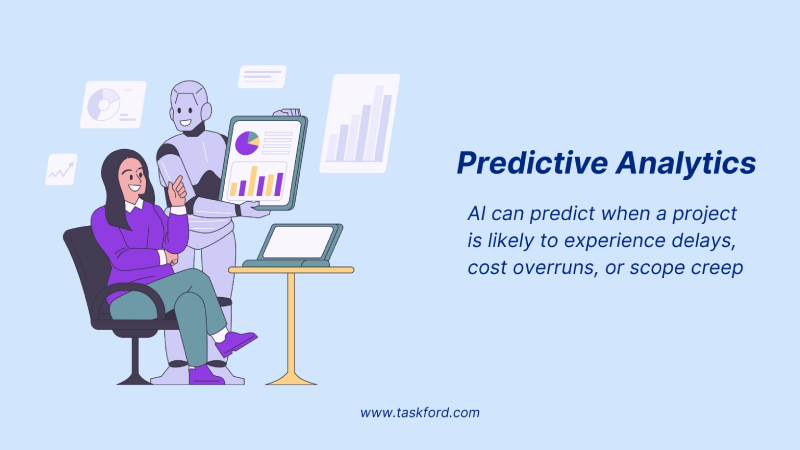
2. Real-Time Monitoring: Continuous Risk Detection
AI continuously monitors project data in real time, offering immediate alerts when anomalies occur. As projects unfold, AI tracks key performance indicators (KPIs) such as budget adherence, project progress, and team performance, spotting deviations that could signal emerging risks.
For example, AI can detect if a team is behind schedule on a key task or if costs are rising unexpectedly, alerting managers immediately to take corrective action.
3. Machine Learning: Evolving with Every Project
Machine learning allows AI systems to improve over time as they process more data. The system learns from past and current projects, recognizing subtle patterns that may not be immediately obvious.
For example, AI may detect that a specific team’s performance correlates with project delays, something human managers might miss in periodic reviews. Over time, machine learning enables AI to make more accurate predictions and refine its risk detection capabilities.
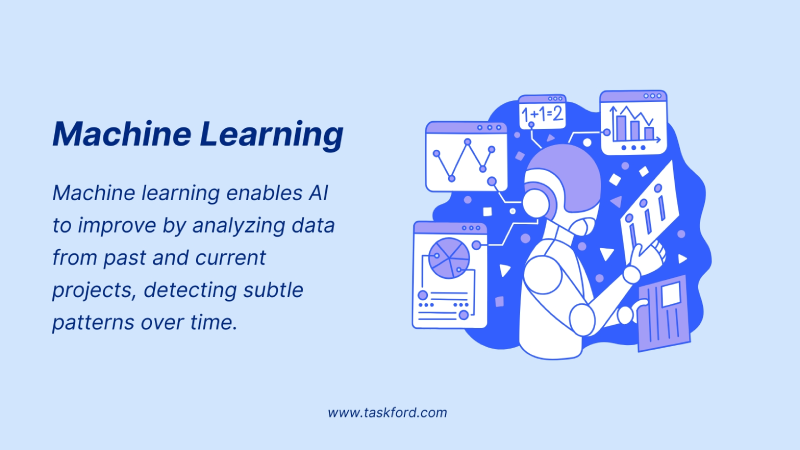
4. Identifying Hidden Risks: Uncovering Issues Before They Escalate
AI doesn’t just focus on the most obvious risks; it can also uncover hidden or indirect risks. These might include factors like miscommunication between departments, team burnout, or resource bottlenecks that are not immediately apparent. AI analyzes communication patterns, workload data, and resource allocation to detect potential risks before they escalate into serious problems.
5. Automated Alerts and Risk Mitigation Strategies
Once AI detects a potential risk, it doesn’t just notify the project manager; it can also suggest immediate risk mitigation strategies based on data.
For example, if a risk of delay is identified, AI can recommend reallocating resources or adjusting timelines to avoid disruption. This automation enables project managers to respond faster and with more confidence, preventing minor issues from snowballing into larger problems.
In short, AI provides a proactive, data-driven approach to risk management, helping project teams stay ahead of problems and ensuring smoother project execution.
Benefits of Early Risk Detection with AI
Detecting risks early can make a big difference in keeping a project on track. Here’s how AI helps with early risk detection and the benefits it brings:
- Proactive Management: AI allows project teams to spot potential issues before they happen. Instead of reacting to problems after they arise, teams can take action early to prevent risks from becoming bigger problems.
- Cost Savings: By catching risks early, AI helps avoid costly delays or changes later in the project. It also helps teams use resources more efficiently, preventing unnecessary expenses.
- Better Decisions: AI gives project managers clear, data-driven insights that help them make better decisions. With accurate predictions, they can choose the best actions to keep the project on track.
- Faster Action: Since AI works in real-time, it can spot risks right as they emerge. This means project managers can act quickly to fix problems, reducing delays and keeping the project moving smoothly.
- Higher Project Success: By addressing risks early, AI increases the chances of completing a project on time and within budget, leading to a higher success rate for projects.
- More Confidence from Stakeholders: When risks are spotted and dealt with early, stakeholders feel more confident in the project’s success. They know the team is managing the project carefully and preventing issues before they arise.
Case Studies and Practical Application of the AI Spotting Project Risks
Case Study #1: Construction Industry – Reduce Delays with AI
AI helps predict potential delays in construction by analyzing weather patterns, supply chains, and workforce data. A construction company used AI to flag material delivery delays in advance, allowing them to adjust schedules and suppliers, reducing project delays by 30% and staying within budget, according to a McKinsey study on AI in construction.
Case Study #2: IT and Software Development – Managing Scope Creep
Scope creep is a common challenge in IT and software projects. AI can help track changes in project requirements, timelines, and resources to prevent this issue.
Example: A software company used AI to monitor project data, flagging deviations from the original scope. This early detection allowed the team to address scope creep by realigning expectations with stakeholders, preventing delays and overruns.
Case Study #3: Project Management Software – Real-Time Risk Alerts
AI-powered project management software helps detect risks in real-time by continuously analyzing project data such as timelines, budgets, and resource allocation.
For example, a large enterprise used AI in its project management platform to monitor key project metrics. When the AI system flagged potential budget overruns and resource shortages early, the team was able to make quick adjustments, reallocating resources and adjusting schedules. This proactive approach helped reduce project delays by 15% and kept costs within the allocated budget, according to a Forrester report on AI in project management
Looking for the best tools to optimize your project management? Discover the top project management tools that can help you streamline your workflows and manage risks more effectively.
Case Study #4: Marketing Campaign – Optimizing Performance with AI
AI helps optimize marketing campaigns by analyzing audience behavior, engagement metrics, and ad performance in real-time. A global retail brand used AI to track and analyze the performance of its digital advertising campaigns. The AI system identified underperforming ads and potential overspending, enabling the team to adjust targeting strategies and optimize their ad budget. This proactive approach resulted in an 18% reduction in overspending and a 22% increase in ROI, according to a McKinsey study on AI in marketing.
The Future of AI in Project Risk Management
AI is transforming project risk management, and as technology continues to evolve, its role in identifying and mitigating risks will only grow. Here’s a look at the future of AI in project risk management:

1. Automation of Routine Tasks
AI is expected to handle up to 80% of traditional project management tasks based on projections made by Gartner, including data collection, tracking, and reporting. This shift will allow project managers to focus more on strategic decision-making and leadership roles.
2. Enhanced Predictive Analytics
Advanced AI models will provide real-time risk assessments by analyzing vast datasets, enabling proactive identification and mitigation of issues before they affect project timelines or budgets.
3. Integration with Emerging Technologies
AI will increasingly integrate with Internet of Things (IoT) devices, blockchain, and augmented reality (AR) to offer comprehensive risk management solutions, enhancing data accuracy and decision-making processes.
4. Personalized Risk Management Strategies
AI will enable the development of tailored risk management approaches, considering the unique aspects of each project, such as scope, resources, and stakeholder dynamics, leading to more effective risk mitigation.
5. Continuous Learning and Adaptation
AI systems will continuously learn from new data, improving their predictive capabilities and adapting to changing project environments, thereby enhancing the accuracy of risk assessments over time.
Implications for Project Managers
As AI takes on more responsibilities, project managers will need to:
- Develop skills to interpret AI-generated insights and make informed decisions.
- Understand the ethical considerations and limitations of AI in risk management.
- Foster a culture of adaptability and continuous learning within their teams.
By embracing these advancements, project managers can enhance their ability to anticipate and mitigate risks, leading to more successful project outcomes in an increasingly complex and dynamic environment.
Want to learn more about the role of a project manager? LearnWhat Does A Project Manager Do?and how they drive project success in today's rapidly evolving landscape.
Final Thoughts
AI is revolutionizing project risk management by automating routine tasks, enhancing predictive analytics, and integrating new technologies. As AI continues to evolve, it will enable project managers to identify and mitigate risks more efficiently, driving better project outcomes.
However, embracing AI requires project managers to adapt by developing new skills and fostering a culture of continuous learning. With AI-driven tools, project managers can navigate the complexities of modern projects, leading to more successful and timely completions. The future of project risk management is here, and AI is leading the way.
Related Reading
- AI Project Management - How AI is Revolutionizing Project Management: A Look at 2025 and Beyond
- Top AI Cloud Business Management Platform Tools
- Will AI Replace Project Managers - Separating Hype from Reality in 2025's AI Project Management Landscape
- AI Project Management Tools Top 5 Best Picks in 2025
Making work simpler,
smarter, and more connected
Join our waitlist and be notified first.

Related Blog
Subscribe for Expert Tips
Unlock expert insights and stay ahead with TaskFord. Sign up now to receive valuable tips, strategies, and updates directly in your inbox.

